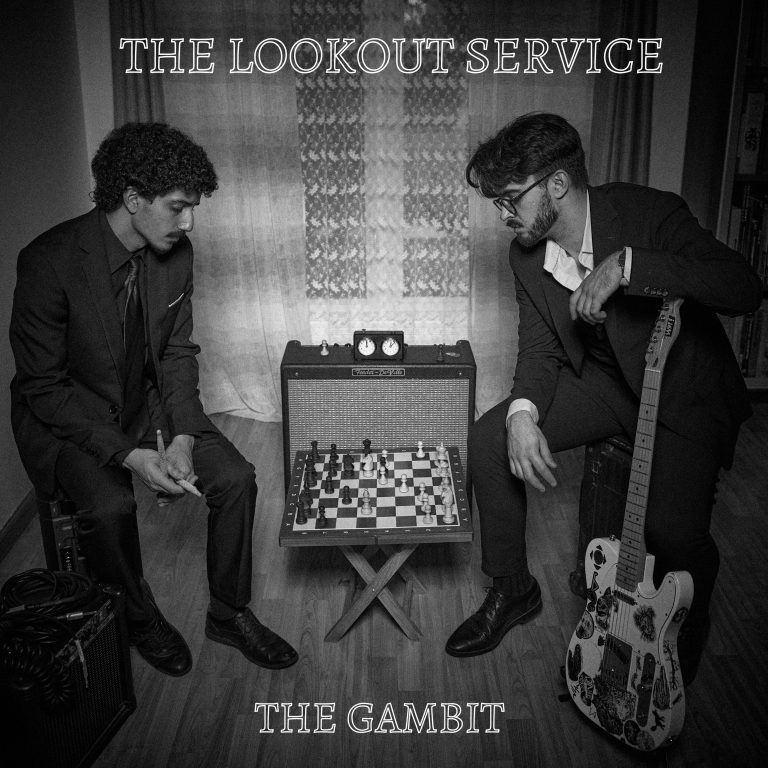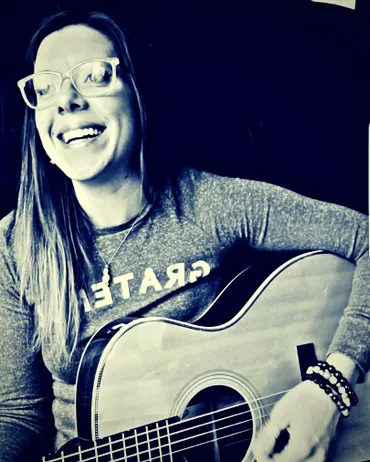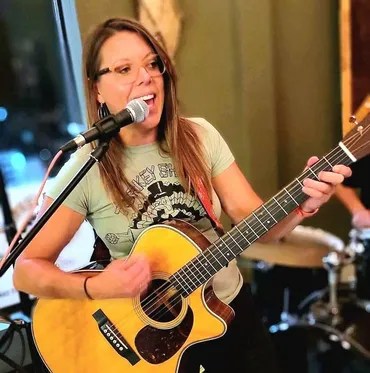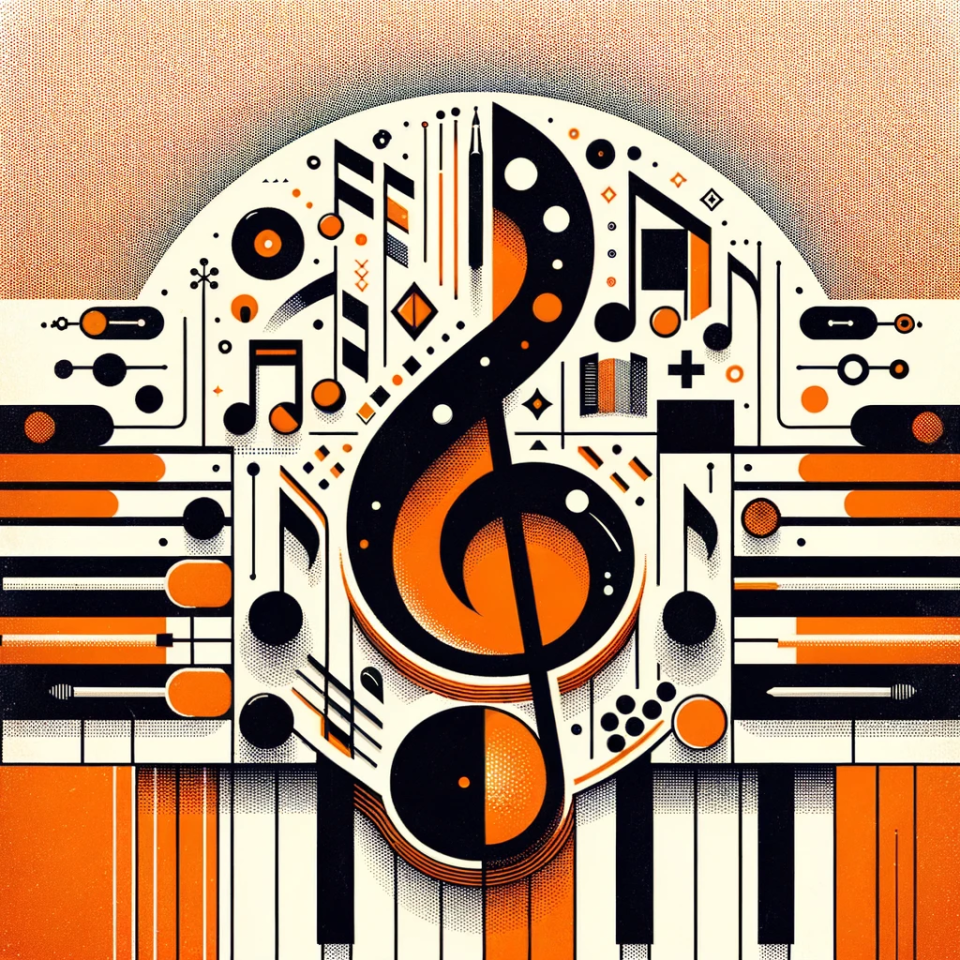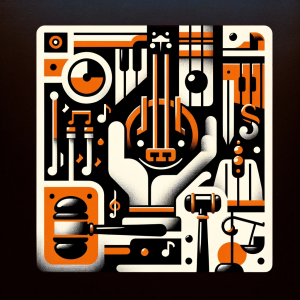Dressed to the nines and delivering a sound that’s just as sharp, Toronto’s The Lookout Service has quickly carved out a space for themselves in Toronto’s rock scene.
Stergios Kalochoridis and Robert Ragazzo—the dynamic duo behind the music—have been making waves since 2018 with their electrifying performances and a sound that’s both titanic and intensely personal.
With Stergios on vocals and guitar, and Robert bringing the thunder on drums, they’ve become known for their ability to captivate audiences, weaving powerful lyrics with soaring riffs into a musical experience that demands attention.
Their recently released album “The Gambit” features a wide spectrum of their writing ability, and displays their sheer, raw talent that translates through the studio as thoroughly as their live performances.
Recently, The Indie Distributor had the chance to sit down with Stergios to dive deeper into their latest record and what the journey to its creation has been like.
As a band, had you worked with other musicians or has it always been the two of you? Also, how long have you been creating together?
Stergios Kalochoridis: The Lookout Service was formed in 2018, while I was attending the University of Toronto studying International Relations. Needless to say I didn’t pursue my studies and started looking for people to play and write music with. After a couple years and lineup configurations, the band was solidified as a two-piece and we began gigging all around the city wherever we could, and continue to do so today. We got the “Lookout” for our name from a pickup line that old blues and rock and roll musicians used to yell before they would bust out into a ripping solo or rhythm section, and we added “Service” because we wanted to serve that rock power that those musicians pioneered.
What’s the concept of the Gambit as it relates to your record? How does chess fit into the mix for your story?
SK: Since right around the time we started preparing for this record, Rob and I have enjoyed playing chess to pass the time before gigs. When it came time to start thinking of a name for the record, we thought that “The Gambit” would be a fitting title because it represents a chess move that requires sacrifice in order to get the upper hand and a better position. This record for us in many ways was a huge sacrifice, to try to get us a “better position” in our music scene. We have also stuck to a black and white aesthetic since the inception of the band, so it all seemed very fitting.
Chess also appears as the theme in the video “Rough Around the Edges”—tell us about shooting that video.
SK: The Rough Around The Edges video concept came to us on the way back from a gig. We were brainstorming ideas for music videos and we already had the chess concept in mind. We thought it would be interesting to play a chess game where the pieces were not inanimate, and played by people. It would allow us to depict the emotions of the pieces, about the decisions made by the two kings – played by Rob and myself. We tried to recreate “The Immortal Game” – one of the most famous recorded chess games ever played (played in 1851) and it can also be found on the chess board on the cover of the album!
Did you end up working with Luc Chiasson for your singles as well as the full album?
SK: We recorded the entire album with Luc Chiasson back in January of 2023! Just goes to show how long we were prepping for the release!
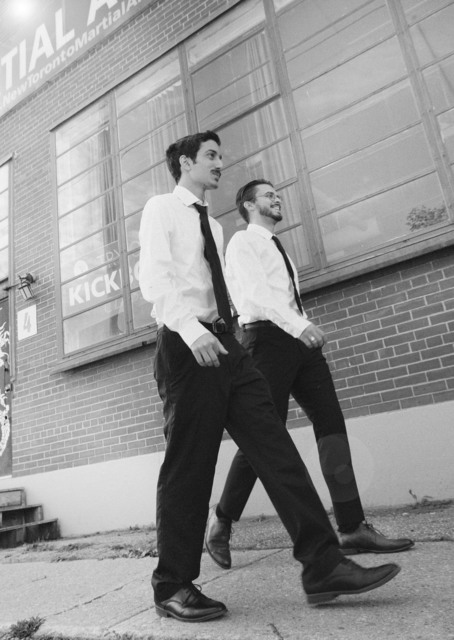
Was this your first time working with a producer for your music?
SK: We’ve actually always worked with a producer to record our music. Rob and I both never really got into recording our own music. Working with Luc is always exciting and new, and we like to try new things to keep the creative process as open as possible.
What are some of your favourite stories from the recording process?
SK: In the month that it took to record the album, we had a lot of fun in the studio. We got to rent out the entire studio for the month and could come and go as we pleased, stopping and picking up whenever we wanted to. We laid down all the drums first, then guitars and finally vocals. We had a bit of a hiccup towards the end of recording the album when Luc’s interface just completely died, and he had to go and completely rewire a new one in. We managed to get it done though!
Was there a piece of equipment, old or new, that became the MVP during the recording process? How did it influence the sound of the album?
SK: My main 2017 Tele is featured on pretty much every song. Like most guitarists, everyone has their number 1, and for me that guitar just sounds the best. I love Big Muffs for fuzz tones and an OCD (Fulltone) for dirty overdrive, but the one pedal that opened up some cool new avenues for me to explore on this record was the Danelectro Backtalk pedal – a reverse delay. I used it on the bridge of Daffazank and I Am The Dragon to add a dystopian vibe that I just couldn’t get from regular delay pedals.
So far, you have released a series of singles, and this time you went full album. What was the thought process behind that decision?
SK: Looking back I think we wanted to release an album so we could finally have a big body of work out publically for people to go and listen to. We chose to do four singles over four months – to create hype around the album before its release. I would’ve maybe even spread the singles out a bit further in hindsight, but that’s something maybe worth looking into for the next body of work.
How are you monetizing the record?
SK: Selling vinyls!! Old school baby!
What advice do you have for other indie musicians out there who are in the recording process?
SK: Get yourself a good producer, it’s better than trying to record yourself and not getting your ideas across. It’s scary creatively and financially, but it’s totally worth it. Whatever you do, just make sure that you are consistently giving it your best.
Info about the Gambit album, tour and tickets can be found on their website http://thelookoutservice.com/

